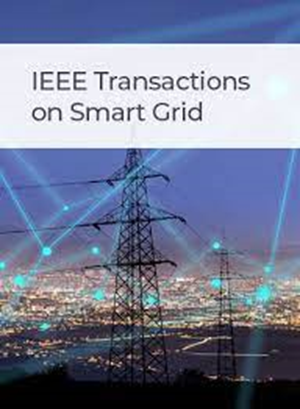基于输入凸神经网络的虚拟电厂无模型聚合
IF 8.6
1区 工程技术
Q1 ENGINEERING, ELECTRICAL & ELECTRONIC
引用次数: 0
摘要
虚拟电厂(VPP)作为一种将大量分布式能源(DERs)聚集在配电系统(DS)中以参与输电级运行的有前途的方式而被提倡。这就需要确定满足DS运行约束的可行VPP功率传输集。利用现有方法依靠约束参数(如线路阻抗)完成识别任务。然而,在实际应用中,DS中的约束参数可能不准确,甚至缺失。因此,本文提出了一种vpp的无模型聚合方法。该方法首先建立了基于输入凸神经网络(ICNN)的VPP电力传输可行集代理。我们基于icnn的代理可以通过历史数据以无模型的方式确定。此外,通过利用ICNN的凸性和柱面松弛性证明,我们基于ICNN的代理可以被重新表述为没有二元变量的线性规划模型。这允许在传输级操作中有效地嵌入基于icnn的代理,以便在传输级有效地协调多个vpp。在IEEE 33总线和IEEE 136总线测试系统上进行了数值实验,验证了该方法的有效性。本文章由计算机程序翻译,如有差异,请以英文原文为准。
Model-Free Aggregation for Virtual Power Plants Using Input Convex Neural Networks
The virtual power plant (VPP) has been advocated as a promising way to aggregate massive distributed energy resources (DERs) in a distribution system (DS) for their participation in transmission-level operations. This requires identifying the feasible set of VPP power transfers fulfilling DS operational constraints. The identification task is completed using the existing methods by relying on constraint parameters (e.g., line impedance). However, the constraint parameters in a DS may be inaccurate and even missing in practice. Consequently, this paper develops a model-free aggregation method for VPPs. The proposed method first develops an input convex neural network (ICNN)-based surrogate for the feasible set of VPP power transfers. Our ICNN-based surrogate can be determined in a model-free manner by historical data. Furthermore, it is proven by leveraging the convexity and epigraph relaxation of an ICNN that our ICNN-based surrogate can be reformulated as a linear programming model without binary variables. This allows efficiently embedding our ICNN-based surrogate in transmission-level operations so that numerous VPPs can be efficiently coordinated at the transmission level. The proposed method is verified by numerical experiments in the IEEE 33-bus and IEEE 136-bus test systems.
求助全文
通过发布文献求助,成功后即可免费获取论文全文。
去求助
来源期刊

IEEE Transactions on Smart Grid
ENGINEERING, ELECTRICAL & ELECTRONIC-
CiteScore
22.10
自引率
9.40%
发文量
526
审稿时长
6 months
期刊介绍:
The IEEE Transactions on Smart Grid is a multidisciplinary journal that focuses on research and development in the field of smart grid technology. It covers various aspects of the smart grid, including energy networks, prosumers (consumers who also produce energy), electric transportation, distributed energy resources, and communications. The journal also addresses the integration of microgrids and active distribution networks with transmission systems. It publishes original research on smart grid theories and principles, including technologies and systems for demand response, Advance Metering Infrastructure, cyber-physical systems, multi-energy systems, transactive energy, data analytics, and electric vehicle integration. Additionally, the journal considers surveys of existing work on the smart grid that propose new perspectives on the history and future of intelligent and active grids.
 求助内容:
求助内容: 应助结果提醒方式:
应助结果提醒方式:


